Ghost of Tsushima Review
Ghost of Tsushima Review
Sucker Punch Production's latest effort is a gorgeous open-world experience.
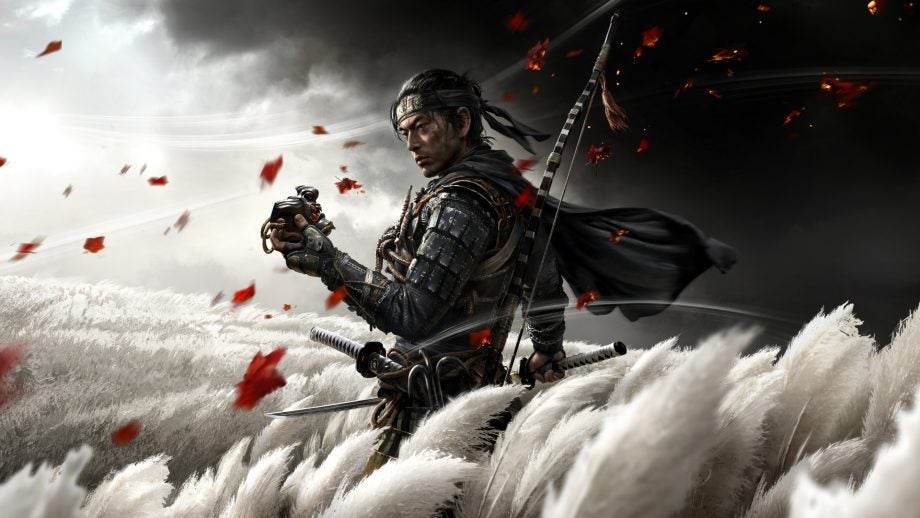
Verdict
Ghost of Tsushima is an excellent open-world adventure from Sucker Punch Productions which adds some innovative ideas to a fairly stagnant genre. The game's depiction of the time period is generic and inoffensive, but that doesn't prevent it from being a stunning visual showcase and a worthwhile swan song for the PS4
Pros
- Tsushima is a beautiful and compelling world to explore
- Combat and exploration are both rewarding and satisfying
- A likeable cast of characters across a robust campaign
- Innovates on the open-world formula in some surprising ways
Cons
- The main narrative is a little boring and predictable
- Lacking in challenge even on the hardest difficulty
- A few unusual technical issues
Key Specifications
- Review Price: £49.99
- Platform: PS4
- Release Date: July 17, 2020
- Developer: Sucker Punch Productions
My journey towards the northern mountains of Tsushima Island is brought to a sudden halt as I stumble upon a gaggle of Mongols harassing villagers on the roadside. I disembark, drawing my sword while walking towards them. Within seconds they notice, confidently striding to meet me, ready and willing to duel.
In mere moments, three of them are struck down, and I hurl a smoke bomb at their fresh corpses before fleeing into the long grass beside me. Dizzy with paranoia, some of the remaining hostiles flee, not willing to accept the same fate as their comrades. I wipe out the stragglers from the shadows, before meeting the final assailant on equal terms.
Seconds after meeting my gaze, he drops to the floor, scampering away like a coward as he realises exactly who he’s up against. The Ghost, a fallen Samurai who has single-handedly brought down armies; a legend turned reality. His fear is silenced with a downward thrust of my blade, and with that, my adventure continues.
Related: Best PS4 Games
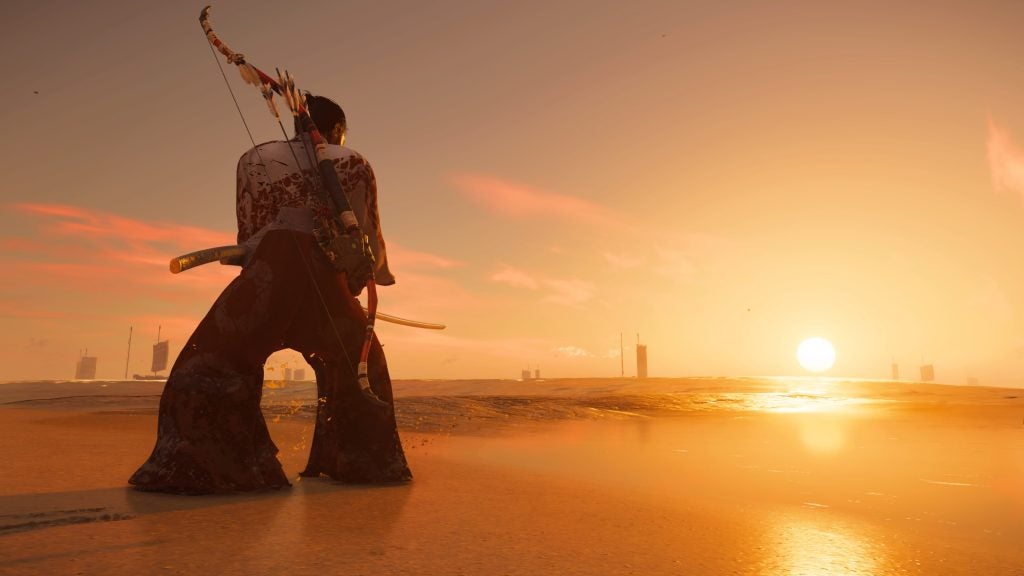
Ghost of Tsushima excels at placing you at the centre of an unparalleled power fantasy. Jin Sakai is a warrior meant to be feared, choosing to abandon the strict life of a Samurai in favour of a code that isn’t afraid to play dirty if it means protecting the people you love. It’s a fairly one-dimensional and achingly western take on such a setting, but that doesn’t take away from how truly stunning it can be.
Sucker Punch Productions couldn’t have ventured further from its previous works with Ghost of Tsushima, abandoning the world of tongue-in-cheek superheroes and platforming racoons for a historical epic of monolithic proportions. It’s triumphant, even if the storytelling failed to truly engage me beyond a few excellent stories off the beaten path. I also feel such dedication to the era’s picturesque nature and the filmic inspirations of Akira Kurosawa prevent Ghost of Tsushima from ever standing on its own two feet, constantly in the shadow of homage instead of carving its own legacy.
A few small qualms aside, I was smitten with Sucker Punch’s latest outing. It’s both a breath of fresh air for the open-world genre and an obvious imitator of this generation’s finest. The blood of The Witcher and Breath of the Wild runs proudly through Tsushima’s veins, with many of its best mechanics drawing from contemporaries and expanding upon them in unexpected ways.
Related: Watch Dogs Legion Preview
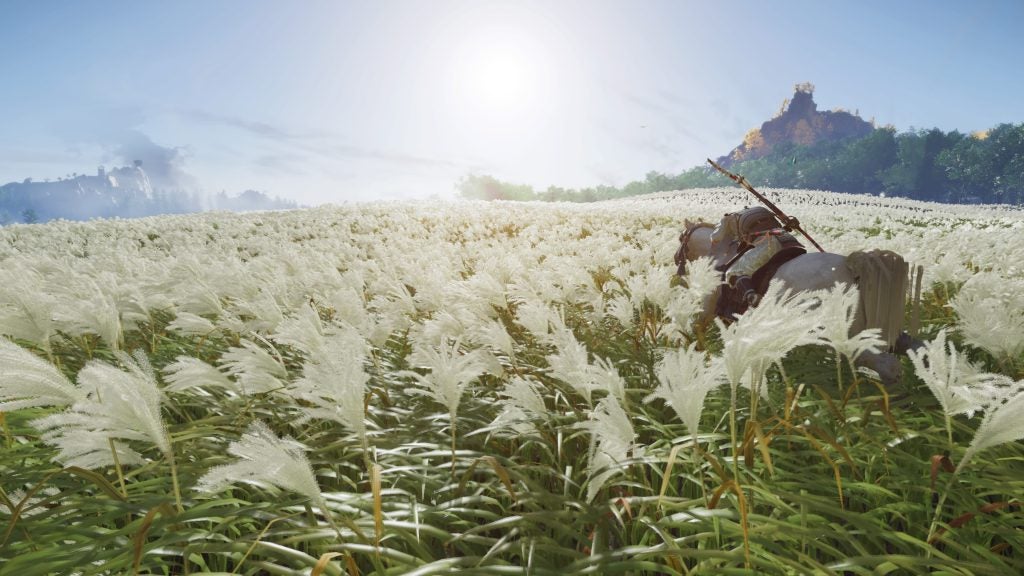
Ghost of Tsushima does its best to abandon the conventional waypoint, an infamous hurdle of the open-world genre for almost a decade now. Players would just blindly follow a marker to their next objective instead of actively exploring on their own terms, robbing the world of any real agency.
Sucker Punch has surmounted this obstacle by making pathfinding a natural part of the world itself. With a flick of the touchpad, a gust of wind will move towards the direction of your objective, whether it be the next mission or a custom marker you’ve set. This means you’ll rarely need to check the map during missions. It works beautifully, and having to analyse the environment for subtle clues means you’re obligated to stop and stare, or in my case, spend hours in photo mode.
Environmental cues like this are all over the island of Tsushima. Yellow birds will lead you to random discoveries, while multicoloured trees and plumes of smoke will indicate nearby shrines and enemy encampments. Far too often I would find myself abandoning the story simply so I could explore, losing hours chasing my own little narratives as a flawed saviour of the people. It’s a shame that outside of such occasions, Jin’s pilgrimage oftentimes loses steam.
Related: Assassin’s Creed Valhalla Preview
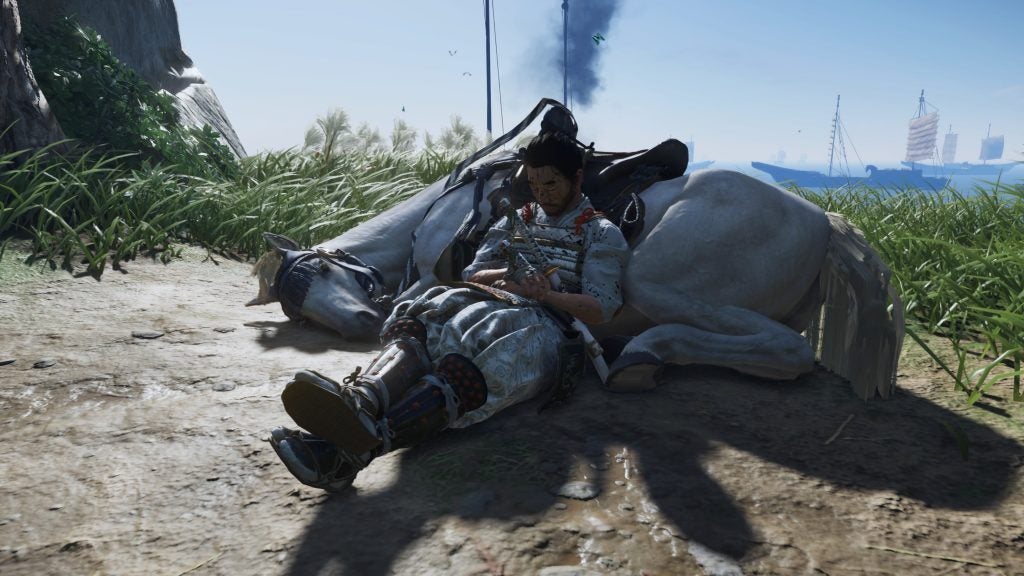
Taking place in 1274, the story follows Jin Sakai as he fights off the First Mongol Invasion of Japan. Opening with a stunning battle on Hanada Beach, things quickly take a turn for the worse as the opposing force occupy Tsushima Island and leave our hero for dead. The opening hours are a mediocre slog, forcing you through oodles of boring exposition and a few painfully slow missions before you’re outfitted with basic abilities like stealth, ranged combat and the ability to assassinate your adversaries.
It’s clear Sucker Punch Productions wants to introduce techniques such as stealth and ranged combat so they coincide with Jin’s growth as a character. Upon performing his first dishonourable kill, he realises that the sacred path of a Samurai must be abandoned if he hopes to survive and save his people. It’s a compelling concept and is explored throughout the core narrative, but is held back by a fairly one-dimensional main character.
Watching Jin grow increasingly conflicted as he’s forced to abandon his heritage and sacrifice everything dear to him purely so his homeland stands a chance at survival is heartbreaking, but we never catch a sufficient glimpse at his past or personality to really care about this thematic deconstruction. Instead, Jin is a bland protagonist with a few occasional bright spots, most of which surface during side quests where he interacts with an excellent supporting cast.
Related: PS4 vs PS5
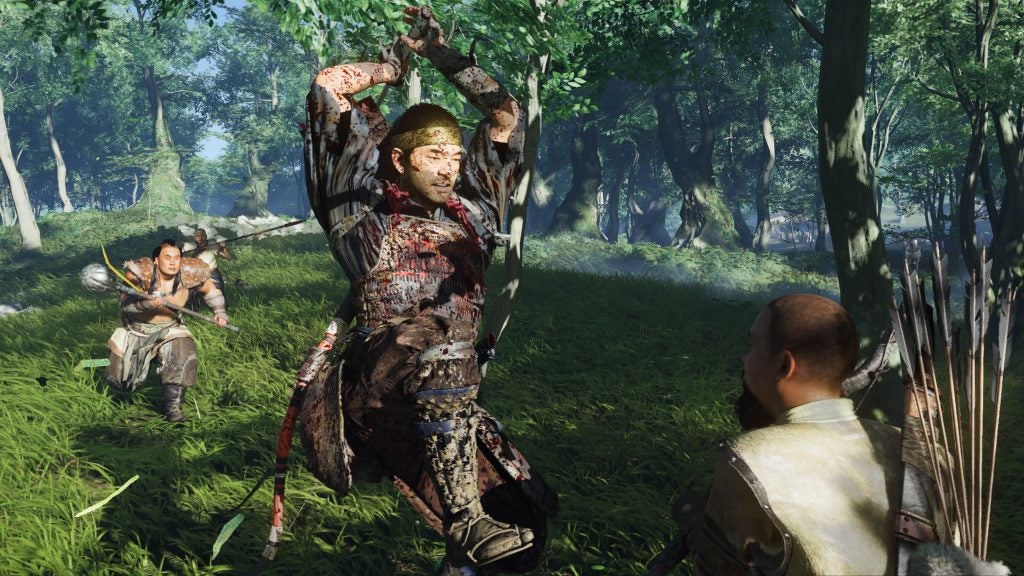
Ghost of Tsushima has you embark on a selection of missions (aka Tales) dedicated to each character, normally culminating in a satisfying narrative crescendo. My personal favourite centred on Masako, an elderly woman who is determined to find the ones responsible for her family’s murder. It’s filled with unexpected twists and turns ranging from forbidden romances to familial betrayals that constantly kept me guessing.
Such side quests are filled with excellent moments like this, with characters given far more personality and room to shine without the distractions of the main conflict. It’s a shame that some haphazard animations and similar rough edges can hinder emotional investment at times – technical issues that feel strangely out of place in a first-party exclusive.
These miniature narratives are also intended to flesh out a motley crew of resistance members who accompany you throughout the campaign, but since you can’t lose any of them, much of the investment feels mute. While it has a number of wonderful moments, much of the storytelling in Ghost of Tsushima gives way to cliches and predictable contrivances, so much so that I’d guess the outcomes of certain scenes as they were happening.
Related: Horizon – Forbidden West
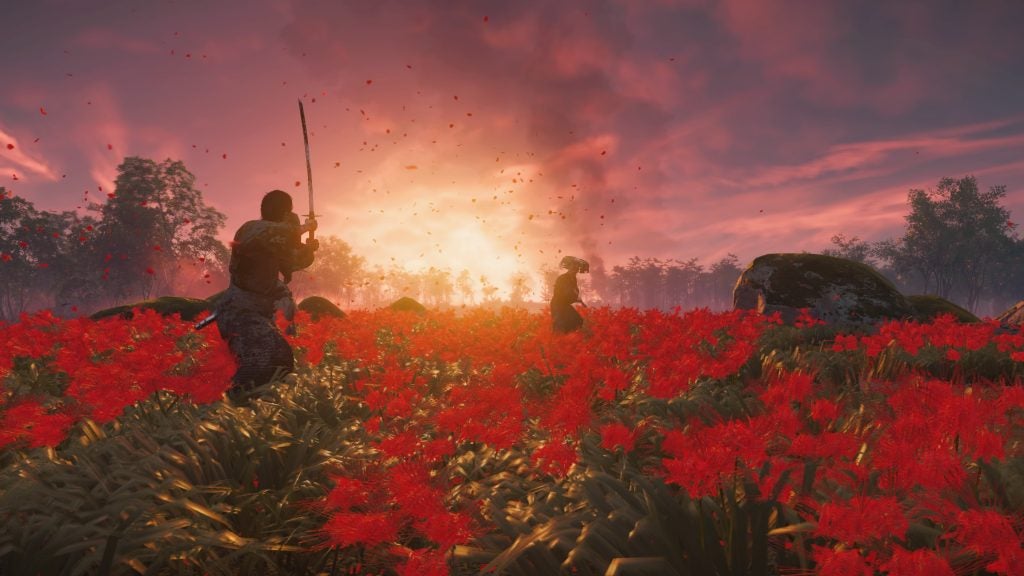
Fortunately, everything else about the game is so fun that I could easily forgive its narrative shortcomings. Jin Sakai moves with a level of unparalleled grace as he leaps up cliffs and rolls under the savage strikes of enemies. You truly feel like an unstoppable warrior, striking fear into anyone foolish enough to challenge you.
Jin’s primary weapon is a sword which is capable of both light and heavy attacks. One is purely for dealing damage, while the other serves to stagger Mongols and leave them vulnerable.
You can switch between four different stances, each of which is effective against a specific enemy type. One is perfect for dealing with rival swordsmen, while another is necessary for taking on sizeable brutes twice your size. Having to constantly switch strategies in the midst of combat keeps things fresh, especially when you combine swordplay with the act of dodging, using items and maintaining environmental awareness. It’s the best of its kind, even giving Sekiro: Shadows Die Twice a run for its money in terms of mechanical satisfaction.
Jin is capable of hurling out kunai, bombs and even firecrackers to damage and distract his enemies, proving invaluable in a scrape where it’s very easy to become overwhelmed. I’d normally be able to manage a maximum of four foes at any given time, but any more than that would force me to retreat and reconsider my options. Even though you’re The Ghost, the majority of battles are still formidable obstacles. At times like these, stealth is your best friend.
Related: Cyberpunk 2077 Preview
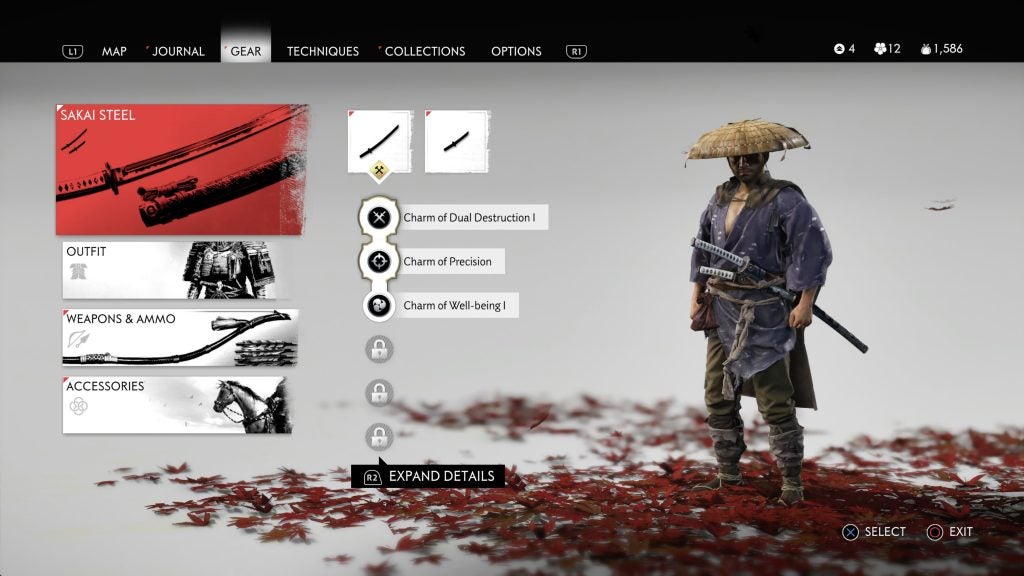
The majority of missions, unless you’re told otherwise, can be tackled through the medium of stealth. Jin can infiltrate fortresses and slaughter everyone in sight without raising a single alarm, leaving a mountain of corpses behind alongside his fractured honour. Being able to murder anyone – with the exception of leaders – with a single strike makes you feel like a ruthless assassin, although doing so without consideration for your actions will quickly result in you getting caught.
Ghost of Tsushima allows you to seamlessly switch between stealth and full-frontal assault. I loved this flexibility, and Tsushima’s robust upgrade and customisation system only furthers the number of ways you can approach each encounter.
Related: Everything we know about PS5
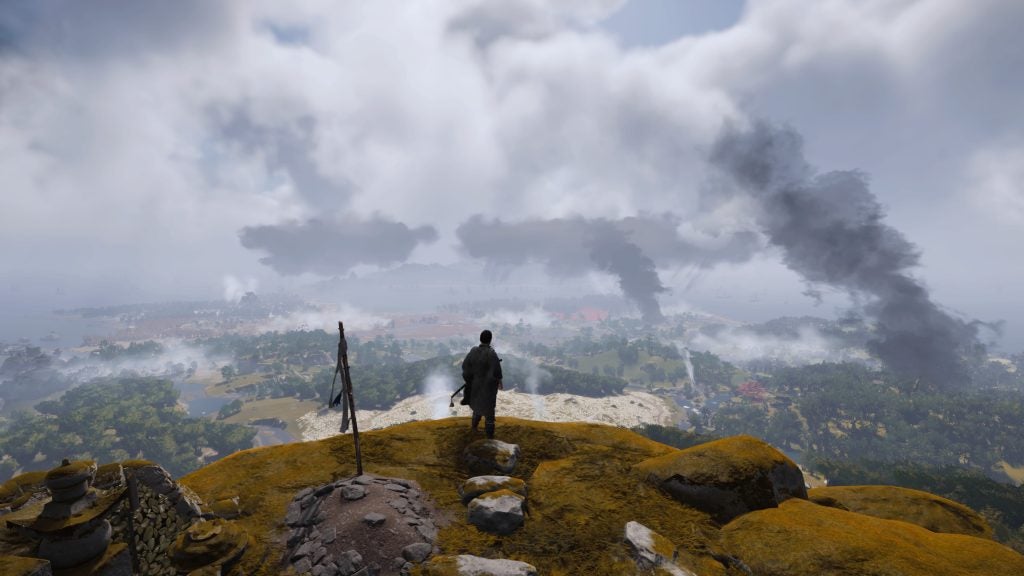
Verdict
While it has a few notable shortcomings, Ghost of Tsushima is an excellent open-world adventure from Sucker Punch Productions which adds some innovative ideas to a fairly stagnant genre. Its depiction of the time period is generic and inoffensive, but that doesn’t prevent it from being a stunning visual showcase and a worthwhile swan song for the PlayStation 4.
The game’s stellar combination of exploration and combat are only brought down by an underwhelming narrative, which is far too obsessed with being an homage to classic cinema than carving out a unique identity for itself. It’s a curated slice of virtual tourism that rarely wants to delve into the deeper societal elements of the era, and I can’t help but feel this could have been far more than a tried-and-true tale of one Samurai’s morality.


